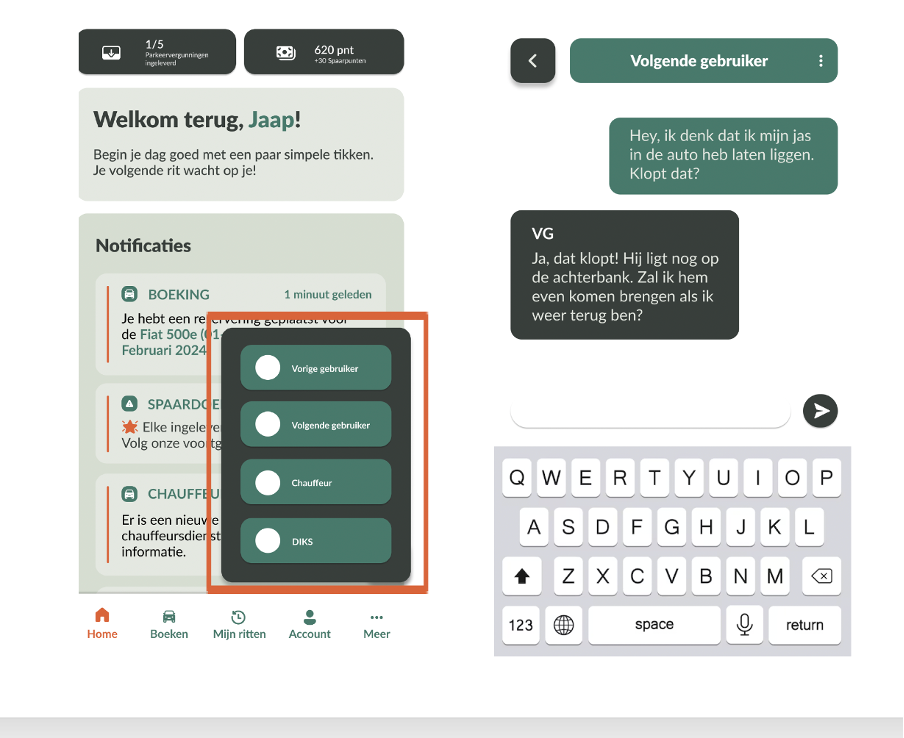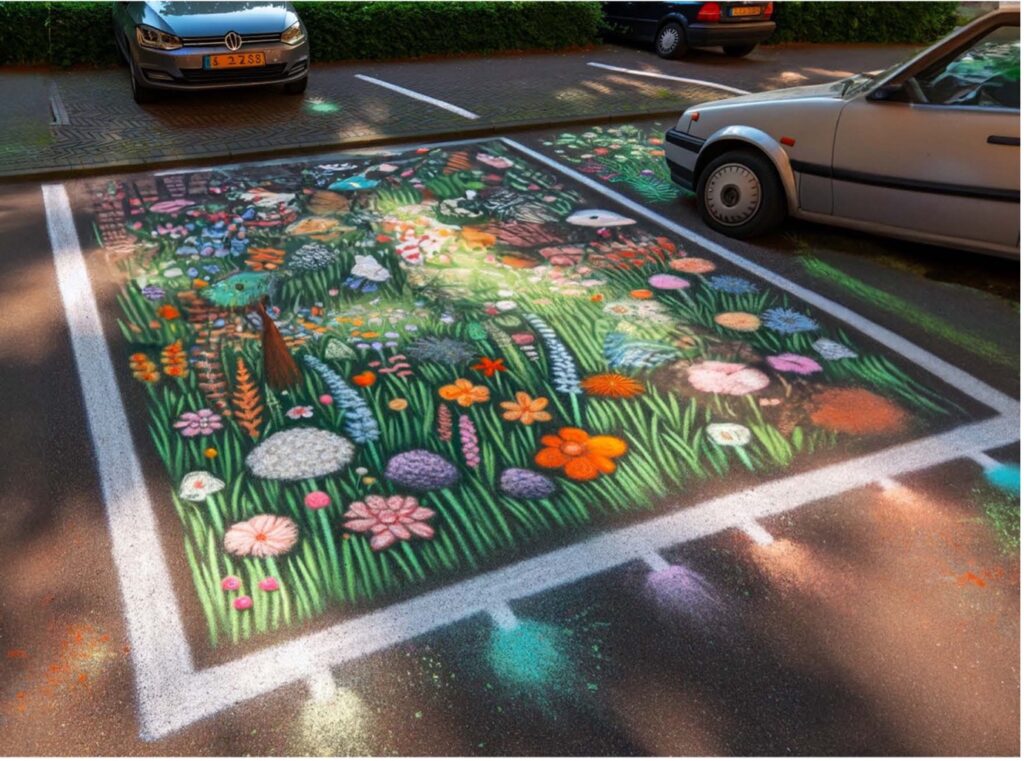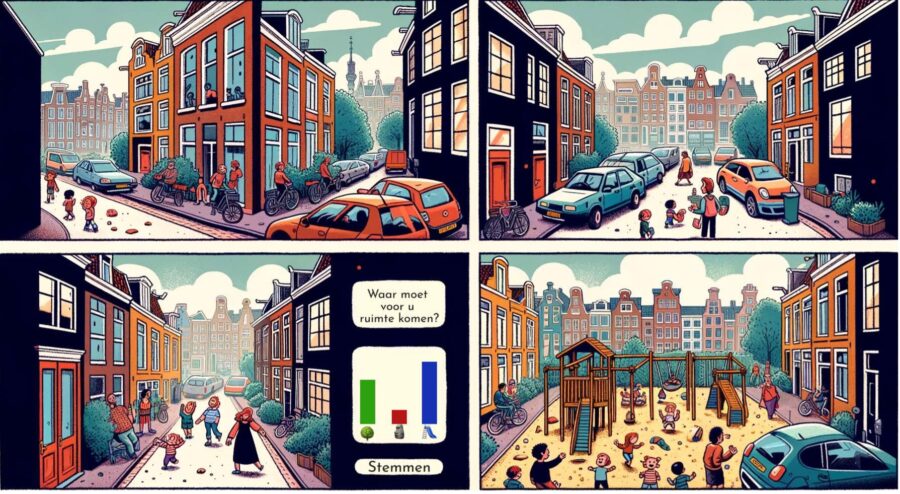In the fall semester of 2023, students of the minor Het internet is stuk, maar we gaan het repareren, were asked to explore and design a resource-sharing platform for the commons. For this project, we collaborated with rental company DIKS autoverhuur and the neighborhood initiative Electrisch Deelrijden De Pijp. The goal is to make a wide choice of electric cars and other forms of electric shared driving available in the neighborhood. When car owners switch to shared driving, parking spaces will be eliminated, and more space will be created in the neighborhood.”

The focus of the students was to incorporate the values of the community in the design of a digital support system for car-sharing. The students were challenged to explore the reasoning about an underlying logic (e.g. regarding privacy, trust, pricing, and reputation mechanisms) of the sharing platform that fits the logic and values of the resource-sharing community and translate this into a digital design.
All three teams worked out a (clickable) prototype for a car-sharing platform that includes all the basic functionalities like how to book and reserve a car. As well as functionalities related to community and collaboration; like a community-based loyalty program, a neighborhood driver service, carpooling, options for communication, a relief fund, neighborhood news items, and CO2 sustainability dashboards.
In addition to the digital prototypes, they also looked at the broader context of design. They explored concepts including scenarios for governance, a citizen counsel, marketing campaigns, and offline activation.

Reflection ED de Pijp
The main goal of ED de Pijp is to get rid of as many cars as possible to get back more space in the neighborhood. They are at this moment not actively involved in deciding what will happen with the extra space, they leave this to the municipality. For them, it’s most important that the student projects and their presented ideas involving community engagement and activation gave them insights into options for a more active role within the community.

Reflection DIKS Autoverhuur
Mark and Erik of DIKS autoverhuur are inspired by the students’ work. This project gave them a different way of thinking. Their key insights are how they as a commercial party can actively work together with neighborhood initiatives like ED de Pijp. In addition, they are inspired by the digital platforms designed by the students for car sharing and how they add extra value to the community. They automatically often think of the ‘bad apples’ – people who want to do bad things with a rental car, this blocks their mind for options and concepts the students presented. They are interested in using parts of these concepts and being more involved in the neighborhood.
Adding extra resource-sharing partners to the network was another idea the students presented which DIKS really liked. They already worked together with Cargaroo on a pilot project. They mentioned that the biggest hurdle is a very practical one. Each party has a different system to incorporate and calculate the pricing. They experienced how this makes it difficult to work together in one overarching platform. While they think it’s an interesting concept to work together in a neighborhood in such a way

Reflection Research Charging the Commons
The presented concepts and prototypes explore how design can contribute to collectivity by promoting community, communication, and collaboration.
In the area of ‘community,’ the students developed a manifesto that presented the values of the community and integrated these into the platform to be signed by members and partners, in order to ensure a commitment. Another example is a citizens’ council where a selected group of neighbors come together and decide as a group what to do with the extra space given to the neighborhood. To increase a sense of togetherness within the community one of the groups developed a recognizable logo as a way to bond.

In the area of “communication,” several ways have been thought of to increase communication between members of the community and the outside world. Students thought of sidewalk chalk art to show what beautiful things can be made in a vacant parking space. This is an example of involving the physical space to communicate collectivity. They also explored ways to increase the communication between members on the digital platform. Interesting patterns they developed around this topic are: a direct chat function with the previous and next car-sharer; an online discussion forum for neighborhood initiatives, polls and maintenance calls; and a neighborhood newspaper integrated into the platform.

Student Groups
Team 1: Eliran Abohadana, Lieve Baetens, Thomas Groeneweg, Thom de Vries | Link to Prototype
Team 2: Tejo van der Burg, Anouar Daoudi, Juliette Groot en Fayaaz Nabie
Team 3: Zaid El Boustani, Joël van Veen, Fabian van Dijk
